What can ‘silent earthquakes’ teach us about the next Big One?
These slowpoke quakes can last days to decades, perhaps prepping faults for a mega slip-up
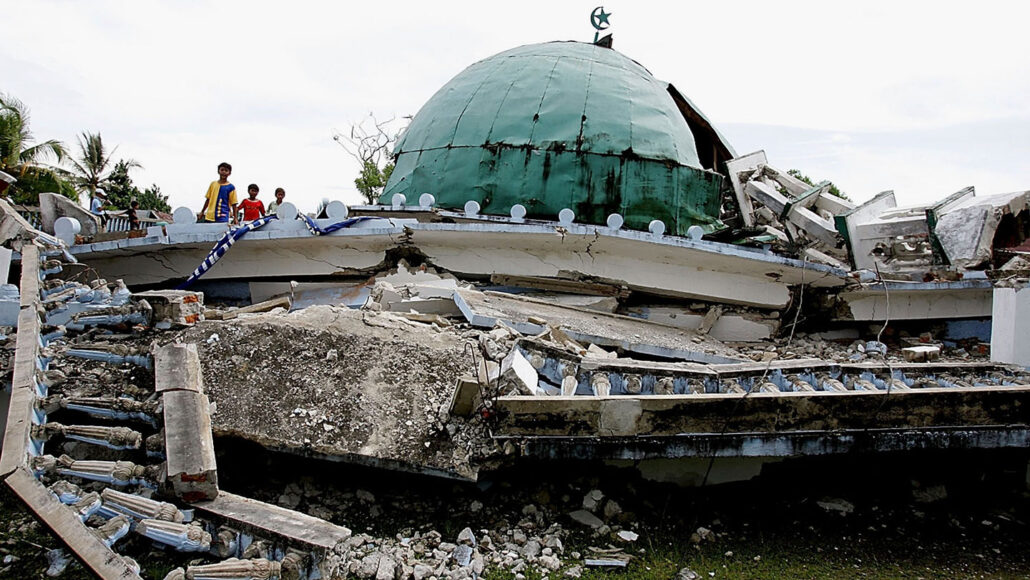
Earthquakes can be devastating, such as the magnitude-8.6 event on March 28, 2005. It struck off the coast of Sumatra, Indonesia, toppling buildings, such as this mosque. Slow-slip events, a type of silent quake, can last for years. Scientists are now investigating how these two types of quakes might be related.
Ian Waldie/Staff/ Getty Images News
On February 16, 1861, a magnitude-8.5 earthquake struck Sumatra, an Indonesian island near Sumatra in the Indian Ocean. The earthquake shook the southeastern side of the island, called Simeulue, triggering a tsunami. That massive wall of rushing water poured onto shore, destroying towns and claiming thousands of lives.
Recently, though, a team of scientists discovered that another earthquake preceded this deadly event. That quake started in 1829 — and didn’t stop for 32 years!
Yet no one felt a single shake.
This kind of slow-moving earthquake is called a “slow-slip event.” They’ve also been called “silent earthquakes” because not even instruments such as seismometers (Size-MAH-meh-turs) can detect them. Scientists have only begun discovering them because of advances some two decades ago in GPS (global positioning system) technology.
Studying earthquakes helps scientists figure out what’s going on under Earth’s surface. Every earthquake, small or big, can teach scientists something about how much the ground will shake in the future. Unfortunately, no one can predict when an earthquake will hit. Scientists just have to prepare to study any earthquake that strikes.
But slow-slip events like the one near Sumatra change the game for scientists. These silent quakes happen frequently the world over. Sometimes, a slow-slip event happens just before a regular earthquake. This means the two types of Earth movements might be related. By investigating slow-slip events, scientists hope to better understand regular quakes — and possibly how to forecast them.
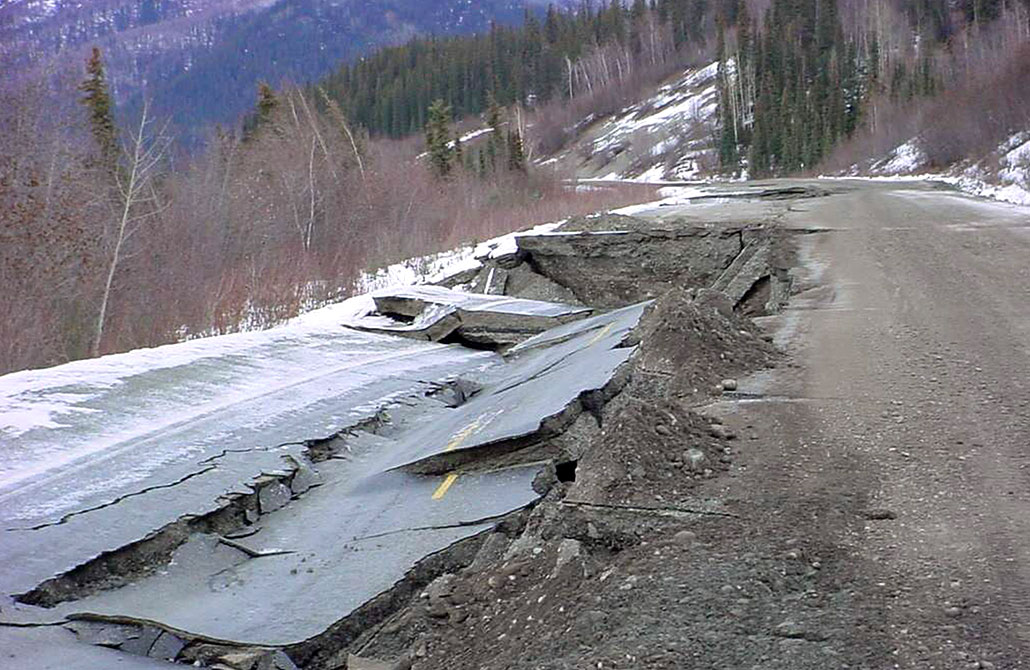
Silent quakes
Earth’s surface is made of a collection of tectonic plates: huge masses of rock, like the ground under your feet. These plates lie on top of a deep layer of gooey, hot rock that allows them to slide around. Sometimes the plates run into each other. Other times, they slide away from each other. Sometimes they just slide past each other.
As these plates play a slow-moving game of bumper cars, they sometimes get stuck together. The rocks then push and push against each other, creating stress. When the rocks suddenly unstick, or snap, they release much of that stress as an earthquake. This is similar to what happens when you bend a stick. As you start bending the stick, stress builds in the center. Once there’s too much stress, the stick snaps.
When this happens underground, that stress release sends waves of energy, called seismic waves, through the ground. On land, we can see and feel that as the Earth shaking. Seismometers can record those waves — even halfway across the planet.
These quakes are probably the type you think of when you hear the word “earthquake.” Framed pictures falling off walls, vases shattering, the ground rumbling. And while these quakes can be scary and even deadly, they typically last less than a minute. Slow-slip events are quite different. They can last days, weeks or longer. As researchers are now figuring out, sometimes these silent earthquakes can last decades.
“We love slow-slip events because they give you all of the excitement of earthquakes, just in slow motion,” says Rishav Mallick. He studies geodesy (Jee-AH-deh-see), or the precise three-dimensional shape of land at any given point on Earth. He works at the Nanyang Technological University in Singapore.
In a slow-slip event, the rocks still slide past each other but very slowly, explains Laura Wallace. She’s a geodetic scientist who splits her time between two scientific institutions. One is at GNS Science, Te Pū Ao, in New Zealand. It’s in a city called Lower Hutt. Her other institution is the University of Texas at Austin. During a slow-slip event, rocks move so slowly that the “energy gets dissipated very, very slowly,” she says. “You don’t feel the shaking.”
Rocks can slip just as far as they would in a regular earthquake. It just takes them far longer. If the rocks slipped the same distance in seconds, such a quake might register as magnitude 7, Wallace says. That would result in some pretty strong shaking. It’s strong enough to damage buildings or even kill unlucky people.
Scientists detect many slow-slip events along structures called subduction zones. In a such a zone, an oceanic plate dives beneath a continental plate. Along the U.S. Pacific Northwest coast, the oceanic Juan de Fuca plate dives under the North American plate. This has formed a subduction zone. This tectonic-plate boundary is called the Cascadia Subduction Zone (CSZ). It runs from Vancouver, Canada to northern California.
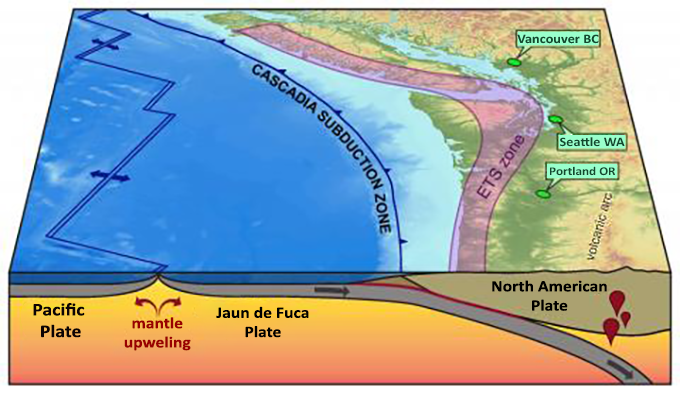
Shallow parts of the CSZ fault are currently “locked,” Wallace says. Rocks stuck along this fault can’t move past each other. Every 400 to 600 years or so, stress builds up so much that the rocks snap and hurtle past each other very quickly. This triggers a “megathrust” earthquake. Megathrust earthquakes are some of the biggest and most destructive natural events on the planet. The 2011 Japan quake that set off a tsunami and killed thousands was just such an earthquake.
But periodically, Wallace says, scientists detect slow-slip events on unlocked spans of the CSZ. And their silent nature and long duration aren’t the only features that make them different from regular quakes. Slow-slip events usually occur deeper than regular quakes. An earthquake might originate 20 to 30 kilometers (12 to 18 miles) underground. A slow-slip event can occur up to 60 kilometers (37 miles) down. Scientists think these quakes occur at greater depth because it’s hotter there. So rocks are more malleable at these higher temps. There could also be fluids that lubricate the fault, decreasing friction and making it easier for the plates to slip past each other.
Detecting slow-slip events
Their super-pokey speed allows slow-slip events to evade seismometers. They don’t produce the strong seismic waves that can travel across the Earth — and cause all that shaking. This stealthy nature explains why it took scientists so long to even discover them. Fifty years ago, small datasets hinted at slowly-moving earthquakes. But technology wasn’t good enough to detect them fully. In fact, it wasn’t until the last 20 years or so that scientists could even show that these sluggish events were underway, Wallace says. GPS advances helped scientists eventually identify them.
Since the 1980s, scientists have studied the movements of Earth’s plates with GPS. This is the same technology that provides your map location and directions on your phone. GPS relies on about 30 satellites. Each orbits Earth twice a day. When your smartphone receives a signal from multiple satellites, it can calculate where on Earth it is, and you are. GPS receivers installed at fault zones can tell scientists how much the land moves between, during and after earthquakes. These devices can measure land movement down to the millimeter (about one twenty-fifth of an inch).
Before slow-slip events were discovered, scientists would visit fault zones periodically with a GPS unit to measure its position. This would allow them to record the land’s movement over time. In the late 1990s, scientists started to suspect slow-slip events were underway. So they started placing “continuously-operating” GPS units at fault zones. These permanent GPS units stayed provide a constant stream of data.
During a slow-slip event, one of these GPS units might move a few centimeters (about an inch or so) over a couple of weeks. This movement shows a slow-slip event is occurring. For example, as the Juan de Fuca plate dives eastward, it pushes the North American plate eastward as well. GPS signals pick up eastward movement on the North American plate. But, during a slow-slip event, those GPS units will move westward just a bit. This is the North American plate sliding slowly back against the Juan de Fuca plate.
Scientists can detect ancient slow-slip events, too. GPS units aren’t helpful, because these events happened so long ago. Here, scientists have to get creative. Mallick and his team, for instance, discovered the 200-year-old slow-slip event near Sumatra by reading the growth patterns in old corals.
Corals grow by building layers of skeleton, one on top of the other. Those different skeletal layers are kind of like tree rings. The different layers — in tree rings or in corals — can tell scientists about the environment in which the layer grew. Corals grow best in shallow water, notes Mallick. Here they can get lots of light as they grow toward the ocean’s surface. When there’s a rise in sea level, corals grow upward, toward the light. When sea levels drop, corals grow outward to avoid coming in contact with the open air.
In some corals along the coast of the island of Simeulue, near Sumatra, Mallick and his colleagues noticed the corals showed odd growth patterns. It looked like sea levels had risen more than what was usual for that part of the globe. The researchers confirmed that the sea hadn’t risen — the land itself had sunk.
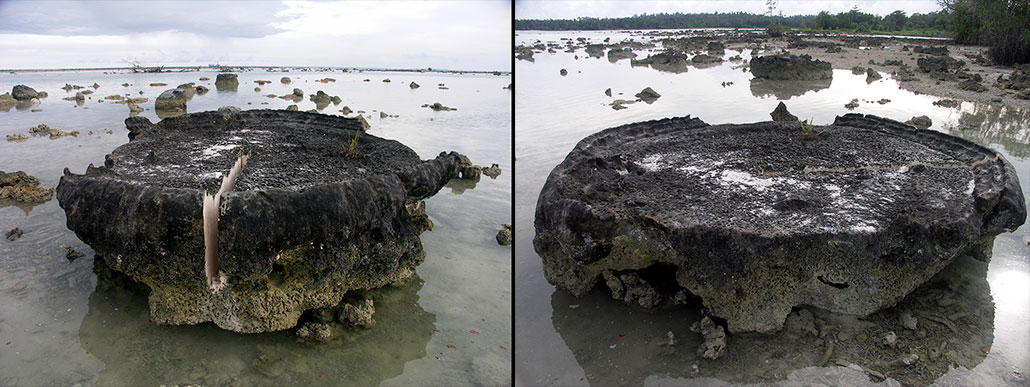
To understand the coral’s odd growth patterns, Mallick’s team looked at data from past research. Previous scientists had measured the age of the corals. They did this by studying the individual layers of coral growth. Each layer holds information about when it formed. Researchers can determine the age of those layers based on the different amounts of the carbon isotopes they contain. (These isotopes are versions of carbon atoms that differ in the number of neutrons in their nuclei). The scientists determined that the land had been sinking for 32 years, starting in 1829. Then in 1861, the corals all died. They had been pushed above the ocean surface and exposed to air. The only thing that could have pushed the corals so high was the magnitude-8.5 earthquake that struck near Sumatra that year.
The team published its findings in May in Nature Geoscience.
Now researchers are wondering: Could slow-slip events and regular earthquakes be related? If so, how? “That’s probably one of the biggest things that we’re trying to deal with right now,” Wallace says.
A puzzle to solve
Some of the strongest earthquakes that people experience occur along subduction zones. This also happens to be where scientists also detect many slow-slip events. There’s that magnitude-9 earthquake that shook northeastern Japan in 2011, for instance. And a magnitude-8.2 earthquake that struck the subduction zone off the coast of northern Chile in 2014.
“There’s really good evidence that both of those massive earthquakes were actually preceded by a large slow-slip event,” Wallace says. She stresses that it’s currently impossible to say whether slow-slip events can trigger an earthquake. Slow-slip events happen often, and sometimes at regular, predictable intervals. Much of the time, big earthquakes do not follow slow-slip events. For instance, she points out, “We’ve seen hundreds of slow-slip events around the world that didn’t lead to really big earthquakes.”
Still, there are reasons why scientists suspect they might be related. One is stress, Wallace says.
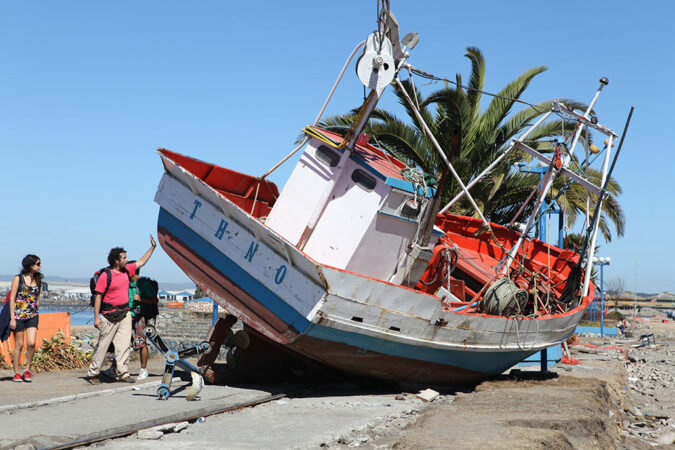
When two plates get stuck together, stress builds along the fault. Slow-slip events can occur on deep part of the fault, relieving some stress in that area. But that same movement could increase stress on the locked zone above, Wallace says, at some point “triggering a larger earthquake.”
Michael Brudzinski describes a stuck plate as a sleeping dragon. He’s a seismologist at Miami University in Oxford, Ohio. If the stuck plate is a dragon sleeping peacefully, then a slow-slip event is a feather tickling its snout. The dragon won’t wake up to every tickle. But one tickle too many, and the dragon might roar.
The secret to solving the puzzle of how slow-slip events relate to earthquakes is data, Mallick says. Lots of data. Scientists need to measure many more slow-slip events and many more earthquakes. Unfortunately, many faults on which slow-slip events occur lie deep in the ocean. It’s hard for scientists to put GPS devices there to track plate movements. But scientists are now developing GPS-like tech to operate deep underwater, Mallick notes.
In New Zealand, where Wallace works, earthquakes do indeed occur during slow-slip events along this region’s subduction zones. Studying this area will help scientists understand the relationship between the two phenomena.
“I don’t think we’ll ever be able to predict earthquakes,” Wallace says. But, with more data and more research, we just might get close.
Note: This story has been updated to correct some numerical and geographical details.







